Description
The instruction
for medical use
of ENALAPRIL medicine
the Trade name
ENALAPRIL
the International unlicensed
name Enalapril Dosage Form
of the Tablet, 10 mg
Structure
One tablet contains
active agent of enalapril a maleate of 10 mg,
excipients: potato starch, magnesium stearate, povidone low-molecular (polyvinylpirrolidone low-molecular medical 12600 & plusmn, 2700, plasdon K-17), lactoses monohydrate (sugar milk) 109.8 mg, talc.
The description
Round flat tablets from color, white to white with a yellowish shade, with a facet and risky.
Pharmacotherapeutic
Angiotensin-converting Enzyme Inhibitor group. Enalapril
the ATX C09AA02 Code
the Pharmacological
Pharmacokinetics Later properties of intake is absorbed by 60% of drug. Meal does not influence enalapril absorption. ENALAPRIL up to 50% contacts blood proteins. ENALAPRIL is quickly metabolized in a liver with formation of an active metabolite of enalaprilat which is more APF active inhibitor, than enalapril. Bioavailability of drug of 40%. The maximum concentration of enalapril in blood plasma is reached in 1 hour, enalaprilat 3-4 hours. Enalaprilat easily passes through gisto-gematichesky barriers, excepting a blood-brain barrier, a small amount gets through a placenta and into breast milk.
Elimination half-life of enalaprilat about 11 hours. ENALAPRIL mainly by kidneys of 60% (20% – in the form of enalapril and 40% – in the form of enalaprilat), through intestines of 33% is removed (6% in the form of enalapril and 27% – in the form of enalaprilat).
Is removed at a hemodialysis (speed of 62 ml/min.) and peritoneal dialysis.
A pharmacodynamics
ENALAPRIL – antihypertensive drug from group of APF inhibitors. ENALAPRIL is pro-medicine: as a result of its hydrolysis, enalaprilat which inhibits APF is formed. The mechanism of its action is connected with reduction of education from angiotensin I of angiotensin II which decrease in contents leads to direct reduction of discharge of Aldosteronum. At the same time the general peripheric vascular resistance, the systolic and diastolic arterial blood pressure (ABP), post- and preload of a myocardium goes down.
Expands arteries more than veins, at the same time reflex increase in heart rate is not noted.
The hypotensive effect is more significant at the high level of renin of plasma, than at normal or its reduced level. Decrease in the ABP in therapeutic limits does not influence cerebral circulation, the blood stream in vessels of a brain is supported at the sufficient level and against the background of reduced arterial blood pressure.
Strengthens a coronary and renal blood stream.
At prolonged use the hypertrophy of a left ventricle of a myocardium and myocytes of walls of arteries of resistive type decreases, prevents progressing of heart failure and slows down development of dilatation of a left ventricle. Improves blood supply of an ischemic myocardium. Reduces aggregation of thrombocytes.
Has some diuretic effect.
Time of approach of hypotensive effect at intake of 1 h, reaches a maximum in 4 6 h and remains up to 24 h. At some patients the therapy for several weeks is necessary for achievement of optimum level of arterial blood pressure. In heart failure the noticeable clinical effect is observed at prolonged use of 6 months and more.
Indications
– arterial hypertension
– chronic heart failure (as a part of combination therapy)
the Route of administration and doses
appoint ENALAPRIL inside irrespective of meal time.
At monotherapy of arterial hypertension an initial dose of 5 mg once a day.
In the absence of clinical effect in 1-2 weeks the dose is increased by 5 mg. After reception of an initial dose the patients have to be under medical observation during 2 h. and in addition 1 h, the ABP is not stabilized yet. If necessary and rather good tolerance the dose can be increased up to 40 mg/days in 2 receptions. In 2 – 3 weeks pass on the maintenance dose of 10 40 mg/days divided on 1 2 reception. In moderate arterial hypertension the average daily dose makes about 10 mg.
The maximum daily dose of drug makes 40 mg/days.
In case of appointment the patients who are at the same time receiving diuretics, treatment by diuretic need to stop in 2-3 days prior to prescribing of enalapril. If it is impossible, then the initial dose of drug has to make 2.5 mg/days.
When the initial dose of drug makes 1.25 mg 2.5 mg it is recommended to use a dosage form of enalapril – a tablet of 2.5 mg.
The patient with a hyponatremia (concentration of ions of sodium in blood serum less than 130 mmol/l) or concentration of creatinine in blood serum more than 0.14 mmol/l an initial dose of 2.5 mg of 1 times a day.
In renovascular hypertensia the initial dose makes 2.5-5 mg/days. The maximum daily dose makes 20 mg a day.
In chronic heart failure the initial dose makes 2.5 mg once, then the dose is increased by 2.5-5 mg every 3-4 day according to clinical reaction to the most tolerable doses depending on sizes ABP, but it is not higher than 40 mg/days once or in 2 receptions. At patients with low systolic arterial blood pressure (less than 110 mm Hg.) therapy it is necessary to begin 1.25 mg/days with a dose. Selection of a dose has to be carried out within 2-4 weeks or to shorter terms. An average maintenance dose of 5-20 mg/days for 1-2 receptions.
At elderly people more significant hypotensive effect and lengthening of time of effect of drug is more often observed that it is connected with reduction of clearance rate of enalapril therefore the recommended initial dose of elderly 1.25 mg.
In chronic kidney disease the cumulation occurs at decrease in filtration less than 10 ml/min. At the clearance of creatinine (CC) – 80-30 ml/min. the dose usually makes 5-10 mg/days, at KK to 30-10 ml/min. – 2.5-5 mg/days, at KK less than 10 ml/min. 2.5 mg/days only in days of dialysis.
Duration of treatment depends on efficiency of therapy. At too significant decrease in the ABP the drug dose is gradually reduced.
ENALAPRIL is applied both at monotherapy, and in combination with other antihypertensive drugs.
Side effects
ENALAPRIL in general is well transferred and in most cases does not cause the side effects demanding drug withdrawal.
– an excessive lowering of arterial pressure, orthostatic collapse, seldom retrosternal pain stenocardia, a myocardial infarction (are usually connected with the significant decrease in the ABP), arrhythmias (bradi- or tachycardia, atrial fibrillation), heartbeat, a thrombembolia of branches of a pulmonary artery, a faint
– dizziness, a headache, weakness, insomnia, alarm, confusion of consciousness, increased fatigue, drowsiness (2-3%), nervousness, paresthesias, a depression
– disturbances of a vestibular mechanism, a hearing disorder and sight, sonitus
– dryness in a mouth, anorexia, nausea, diarrhea or a constipation, vomiting, pains in a stomach, intestinal impassability, pancreatitis, an abnormal liver function and a zhelchevydeleniya, hepatitis, jaundice
– renal failures, a proteinuria
– unproductive dry cough, an interstitial pneumonitis, a bronchospasm, an asthma, a rhinorrhea, pharyngitis
– a hypercreatinemia, increase in content of urea, increase in activity of liver enzymes, a hyperbilirubinemia, a hyperpotassemia, a hyponatremia, decrease in a hematocrit, increase in the blood sedimentation rate (BSR), thrombocytopenia, a neutropenia, an agranulocytosis (at patients with autoimmune diseases) an eosinophilia
– allergic reactions: sometimes – skin rash, an itching, a small tortoiseshell, it is rare – angioneurotic swelled, very seldom a dysphonia, a polymorphic erythema, exfoliative dermatitis, Stephens-Jones’s syndrome, a toxic epidermal necrolysis, a pempigus, a photosensitization, a serositis, a vasculitis, a miositis, an arthralgia, arthritis, stomatitis, a glossitis
– other: an alopecia, decrease in a libido, inflows
of the Contraindication
– hypersensitivity to enalapril and other APF inhibitors
– existence in the anamnesis of the Quincke’s disease connected with treatment by APF inhibitors and also a hereditary or idiopathic Quincke’s disease
– a porphyria
– pregnancy and the period of a lactation
– teenage age up to 18 years
Medicinal interactions
At co-administration of enalapril with non-steroidal anti-inflammatory drugs (NPVP) is possible decrease in hypotensive effect of enalapril, with kaliysberegayushchy diuretics (Spironolactonum, Triamterenum, amiloride) can lead to a hyperpotassemia, with lithium salts to lithium removal delay (control of concentration of lithium in blood plasma is shown).
The concomitant use with febrifugal and soothing drugs can reduce efficiency of enalapril.
ENALAPRIL weakens effect of the drugs containing theophylline.
Hypotensive effect of drug diuretics, beta blockers, Methyldopum strengthen, nitrates, blockers of slow calcium channels, gidralazin, Prazozinum.
Immunodepressants, Allopyrinolum, cytostatics strengthen a gematotoksichnost.
The drugs causing oppression of marrow increase risk of development of a neutropenia and/or an agranulocytosis.
Hypotensive action is strengthened by medicines for the general anesthesia.
Strengthens effect of ethanol.
Special instructions
With care: to apply at primary hyper aldosteronism, a bilateral stenosis of renal arteries, a stenosis of an artery of the only kidney, a hyperpotassemia, a state after transplantation of a kidney, an aortal stenosis, a mitral stenosis (with disturbances of a hemodynamics), the idiopathic hypertrophic subaortal stenosis, general diseases of connective tissue, oppression of a marrowy hemopoiesis, hyperpotassemia, states which are followed by decrease in volume of the circulating blood (including vomiting, diarrhea), coronary heart disease, cerebrovascular diseases, diabetes, a renal failure (a proteinuria more than 1 g/days), a liver failure, at the patients keeping to a diet with restriction of salt or being on a hemodialysis at a concomitant use with immunodepressants and saluretics, at elderly people (65 years are more senior).
It is necessary to be careful when prescribing enalapril to patients with the reduced volume of the circulating blood (as a result of therapy by diuretics, at restriction of consumption of table salt, carrying out a hemodialysis, diarrhea and vomiting) the risk of the sudden and significant decrease in the ABP after use even of an initial dose of APF inhibitor is increased. Tranzitorny hypotension is not a contraindication for continuation of drug treatment after stabilization of the ABP. In case of the repeated significant decrease in the ABP it is necessary to reduce a dose or to cancel drug.
Use of high-permeability dialysis membranes increases risk of development of anaphylactic reaction. Correction of the mode of dosing in the days free from dialysis, has to be carried out depending on the ABP level.
To and during treatment by APF inhibitors periodic control of the ABP, blood indicators (hemoglobin, potassium, creatinine, urea, activity of liver enzymes), a squirrel in urine is necessary.
It is necessary to watch carefully patients with heavy heart failure, coronary heart disease and diseases of vessels of a brain at which sharp decrease in the ABP can lead to a myocardial infarction, a stroke or a renal failure.
Sudden cancellation of treatment does not lead to a withdrawal (sharp raising of the ABP).
For newborns and babies who underwent pre-natal influence of APF inhibitors it is recommended to conduct careful observation for early detection of the significant decrease in the ABP, oligurias, a hyperpotassemia and the neurologic disorders possible owing to reduction of a renal and brain blood-groove at decrease in the ABP called by APF inhibitors. At an oligouriya the maintenance of the ABP and renal perfusion by administration of the corresponding liquids and vasoconstrictors is necessary. In the presence of a renal failure the decrease in removal of an active metabolite leading to increase in its concentration in blood plasma is possible. Purpose of smaller doses of drug can be required by such patients.
At patients with arterial hypertension and a unilateral or bilateral stenosis of renal arteries the increase in content of urea and creatinine in blood serum is possible.
At such patients it is necessary to control function of kidneys within the first several weeks of therapy. Decrease in a dosage of drug can be required.
It is necessary to consider a ratio of risk and potential advantage when prescribing enalapril to patients with coronary and cerebrovascular insufficiency, in connection with danger of strengthening of ischemia in excessive arterial hypotension.
Patients should appoint drug with care with diabetes because of risk of development of a hyperpotassemia.
The patients having in the anamnesis of the instruction on a Quincke’s disease can have the increased risk of developing a Quincke’s disease against the background of treatment by enalapril.
At patients with the profound autoimmune diseases, for example, of a system lupus erythematosus or a scleroderma, increased risk of development of a neutropenia or an agranulocytosis against the background of intake of enalapril.
It is recommended to show care when prescribing enalapril for therapy of chronic heart failure at the patients receiving cardiac glycosides and/or diuretics.
Before a research of function of epithelial bodies drug should be cancelled.
Features of influence of medicine on ability to run the vehicle or potentially dangerous mechanisms
Alcohol strengthens hypotensive effect of drug.
In an initiation of treatment, before end of the period of selection of a dose, it is necessary to refrain from the driving of motor transport and occupations potentially dangerous types of activity demanding the increased concentration of attention and speed of psychomotor reactions as dizziness, especially after an initial dose of APF inhibitor at the patients accepting diuretic means is possible.
Before surgical intervention (including stomatology) it is necessary to warn the surgeon/anaesthesiologist about use of APF inhibitors.
To apply on doctor’s orders.
Overdose
Symptoms – the profound lowering of arterial pressure, up to development of collapse, a myocardial infarction, an acute disorder of cerebral circulation or tromboembolic episodes, spasms, a stupor.
Treatment – the patient turn to horizontal position with a low headboard. In mild cases the gastric lavage and intake of saline solution, in more hard cases of an action, directed to stabilization of arterial blood pressure are shown: intravenous administration of normal saline solution, plasma substitutes, if necessary administration of angiotensin II, hemodialysis (clearance rate of enalaprilat of 62 ml/min.).
Form of release and packing
of the Tablet, 10 mg.
On 10 tablets in blister strip packaging. 2 blister strip packagings together with the instruction for medical use in the state and Russian languages place in a pack from cardboard.
To Store storage conditions in the place protected from light at a temperature not over 25C.
To store out of children’s reach!
3 years
not to use a period of storage after an expiration date.
Prescription status
According to the prescription
the Producer/packer
of JSC Sintez
640008, Russian Federation, Kurgan, Konstitutsii Avenue, 7
the Holder of the registration certificate
of JSC Sintez, the Russian Federation
Decalog LLP,
050050, Republic of Kazakhstan, Almaty, Glazunov St., 41 A-4
to Develop the Address of the organization accepting in the territory of the Republic of Kazakhstan claims from consumers on quality of the products and responsible for post-registration observation of safety of medicine in the territory of the Republic of Kazakhstan
Additional information
| Ingredient |
|---|





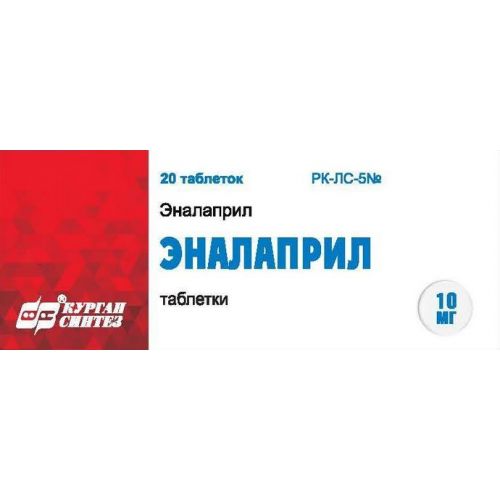
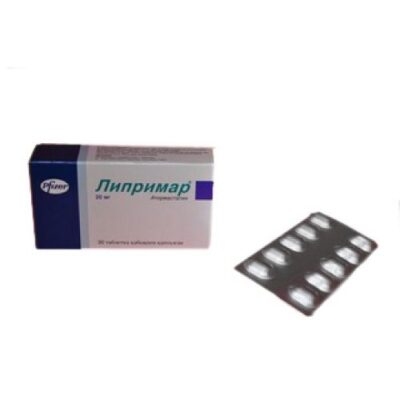
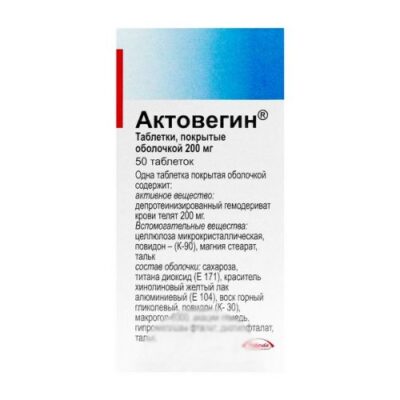
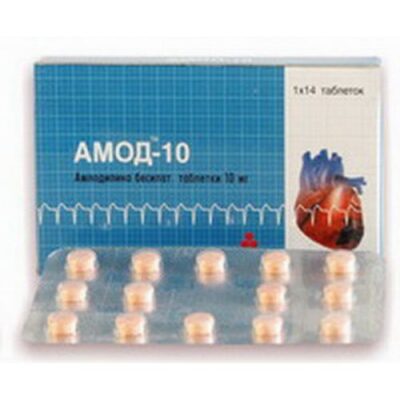
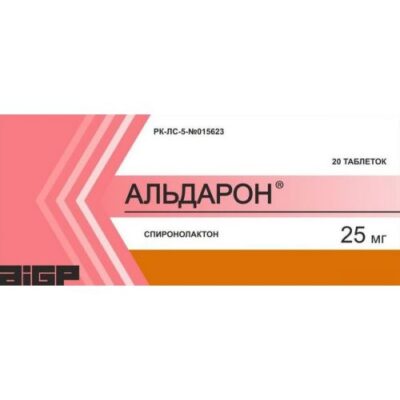
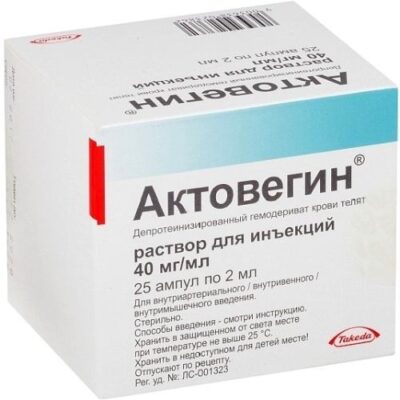
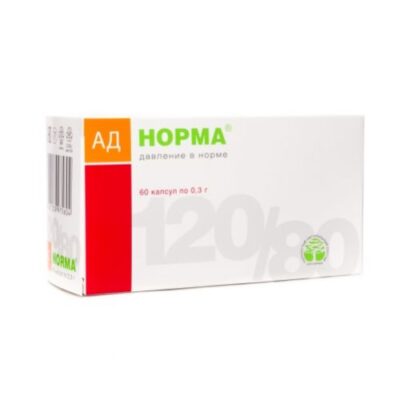
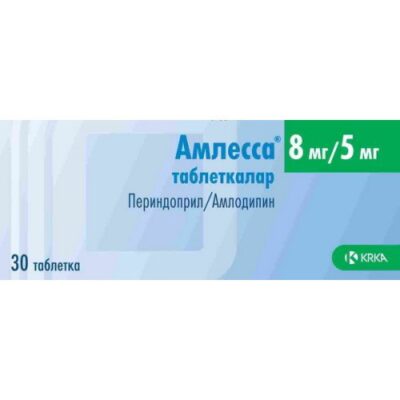
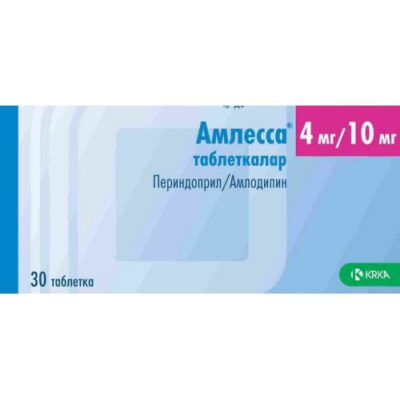
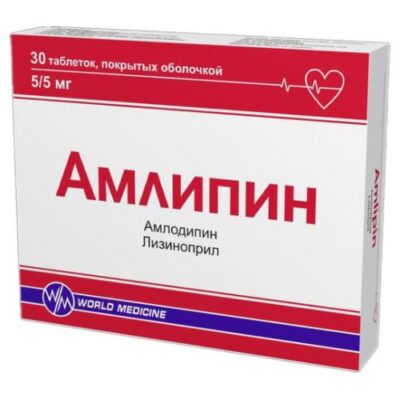
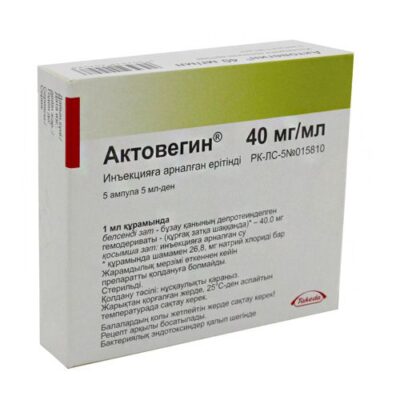






Reviews
There are no reviews yet.